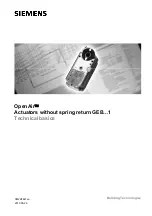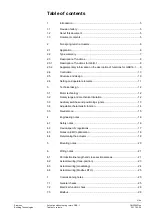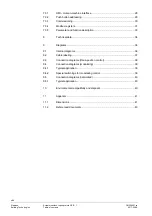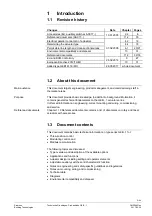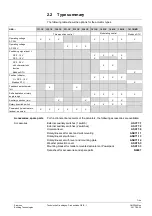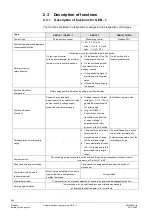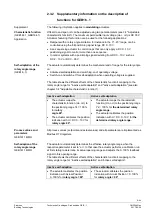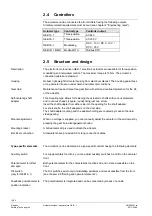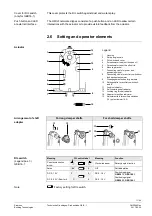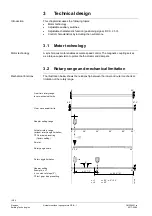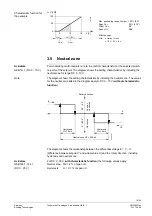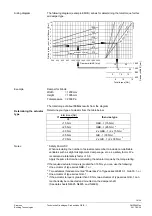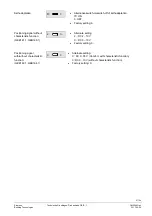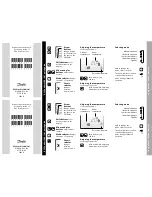
14/44
Siemens
Actuators without spring return GEB…1
CM2Z4621en
Building Technologies
2017-05-26
3.4 Adjustable characteristic function
A modulating positioning signal DC 0..35 V from a controller controls the actuator. The
rotary angle is proportional to the positioning signal. Using potentiometer "Uo", you can
set the offset for DC 0...5 V, and with potentiometer "
Χ
U", you can set the span for
DC 2...30 V.
100
0
U
O
Ys [%]
4
63
7D
0
4
2
5
10
35
2)
1)
Χ
U (max. 30 V)
4)
30
Y [V]
3)
Ys Positioning
range
For inactive self-adaptation: 100 % = Rotary angle 95°
For active self-adaptation: 100 % = Determined rotary angle
Y
Positioning signal
Uo Offset
Χ
U Span (for Ys = 100 %)
2
4
0
1
3
5
Uo
30
2
16
10
24
U
U
o
U
Y s
U
4
61
4Z
0
2
Example
Positioning
signal Y
Positioning
range Ys
Settings
Uo
Χ
U
1)
DC 0...2 V
0...100 %
DC 0 V
DC 2 V
2)
DC 5...10 V
DC 5...35 V
0...17 %
0...100 %
DC 5 V
DC 30 V
3)
DC 0...10 V
DC 0...30 V
0...33 %
0...100 %
DC 0 V
DC 30 V
4)*
DC 0...10 V
0...100 %
DC 0 V
DC 10 V
4)* Characteristic curve for factory setting
∂
The Y input is limited to max. DC 35 V.
∂
The adjustable span
Χ
U is max. 30 V.
Define the adjustable span
Χ
U if the actuator is to open from 0...50 % at a positioning
signal of Y = DC 2…10 V. The offset Uo thus amounts to 2 V. The rotary angle is 90°.
Self-adaptation is inactive.
Calculating the setting value for
Χ
U:
Ζ ∴
Ζ ∴
Ζ ∴
Ζ ∴
∋
(
∋
(
V
16
V
2
V
10
%
50
%
100
V
Uo
V
10
%
Ys
range
g
positionin
span
%
max
Ys
range
g
positionin
max.
U
<
,
√
<
,
√
<
Χ
Uo = 2 V,
Χ
U = 16 V
Actuators
GEB163.1, GEB164.1
Examples as per the
diagram
Note
Example
Formula
Potentiometer settings

